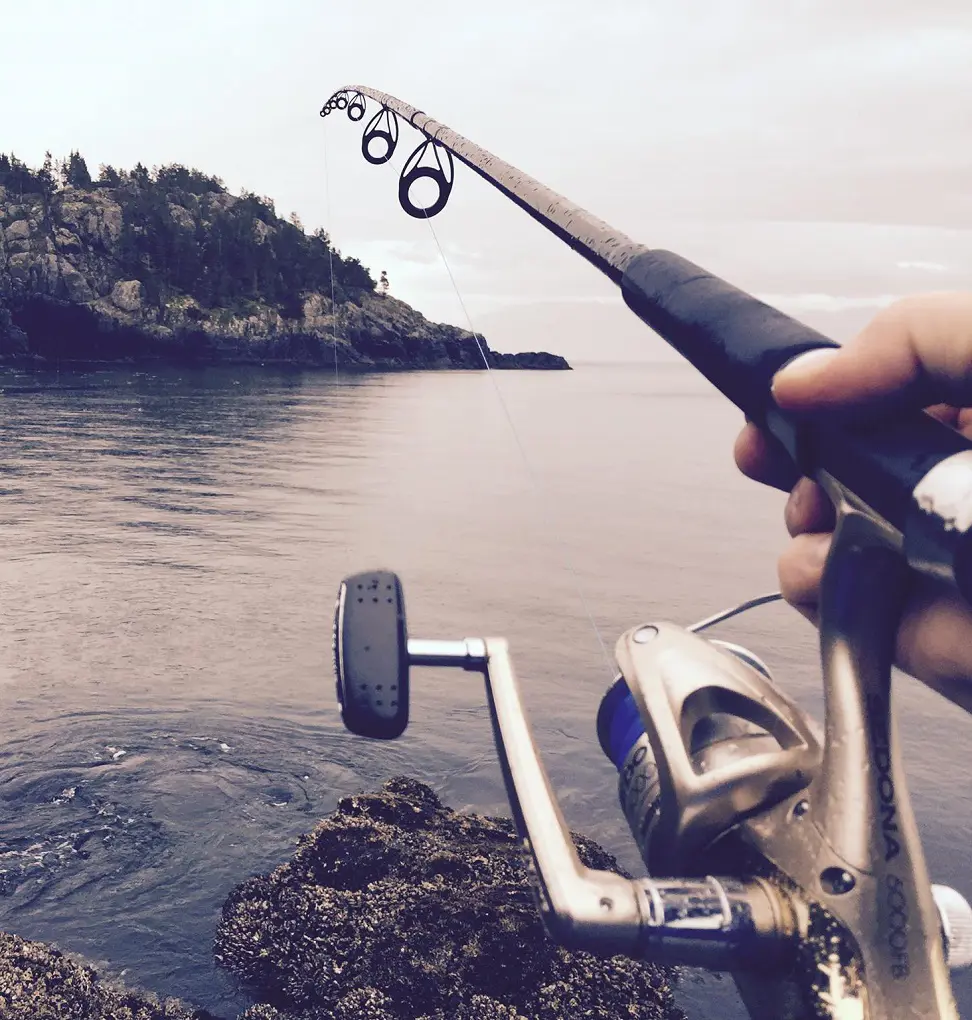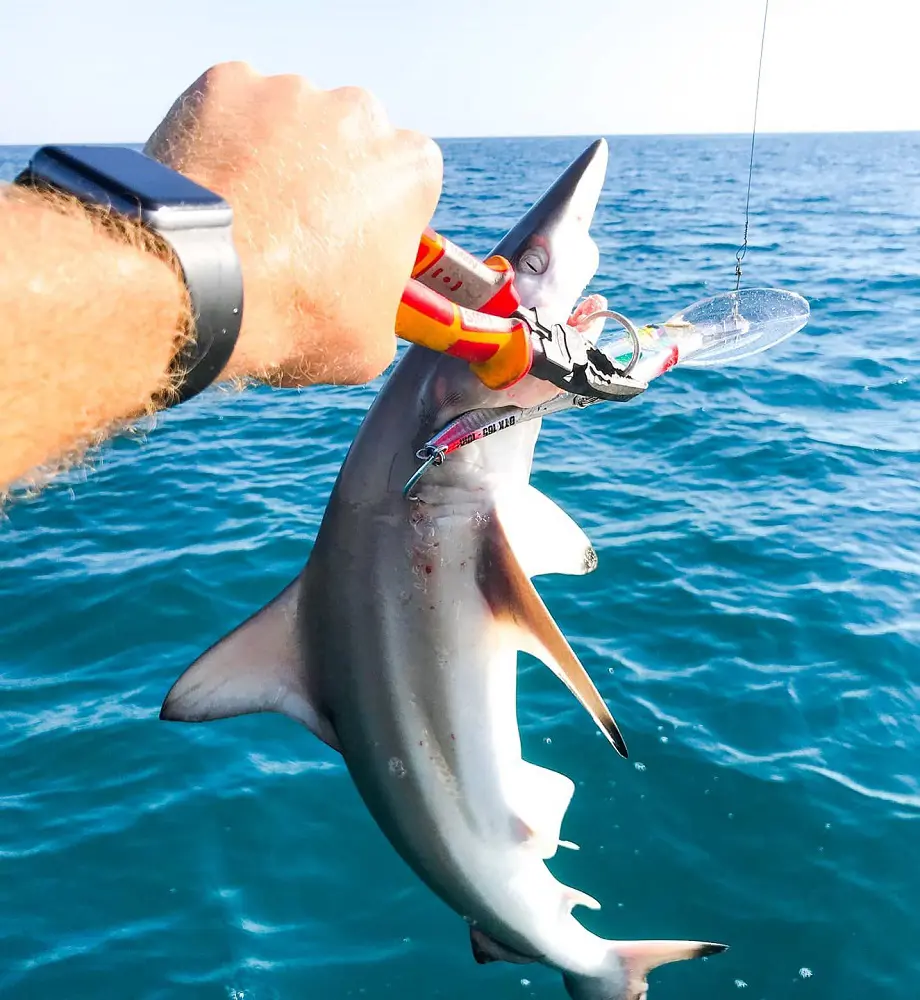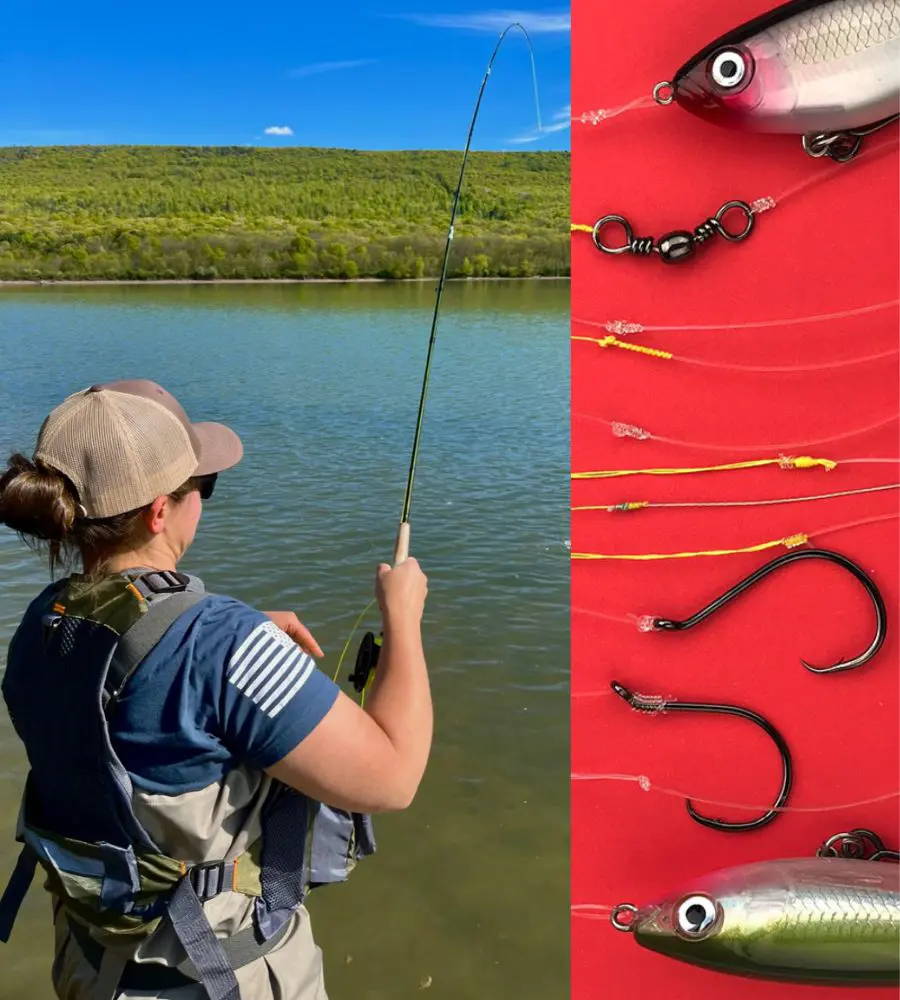Both commercial and recreational shark fishing are practiced in the United States. Commercial shark fishermen employ techniques that let them capture a lot of sharks for the market. Sharks are mostly caught by recreational shark fishermen for their own use, or excitement of the capture.
Commercial and recreational shark fishermen have different fishing methods and laws because of their different goals. Going for shark fishing is not an easy task as you need to know and have some idea about catching this giant fish.
1. Bait for Sharks
A shark is likely to consume anything in its path when they are hungry. These predators consume a variety of baits, including artificials, cut bait, live bait, and even dead bait.
For shark fishing, live bait is an excellent choice, and there is no shortage of prey. Ladyfish, mullet, threadfin, bonito, mackerel, jack, bluefish, ballyhoo, squid, and more are a few examples. Casting nets around beaches and bait heaps will help you catch a lot of them. Bait stores also sell a wide range of items.
Sharks will also consume chopped or dead bait. It could be newly dead or frozen in a grocery shop box. However, anything with a strong smell, maybe leaking, or meat bits hanging out would work best.
Lures for Shark
There are several artificial lures that a shark may be drawn to with ease. Shark fishing lures include topwater, paddle tails, bucktails, spoons, and jerk baits. These animals are lured to feed by the dazzling motions and noise.
2. Shark Fishing Rods and Reels

To start, you'll need your rod and reel since you'll need something to attach your bait to. Numerous types of equipment, including spinning, conventional, electric, bait casing, and more, can be used for shark fishing. The kind of equipment you require will depend on the type of shark you target, as they may weigh anything from two digits to over 2,000 pounds.
A medium-heavy action rod with a 5000 reel is a decent place to start for smaller sharks. You should use extra-heavy rods with reels around the 10000 size if you're targeting bigger sharks. While bigger installations require hundreds of yards of more than fifty pounds, smaller arrangements work well with twenty pounds or more.
3. Other Gears for Shark Fishing
Leader
When it comes to shark fishing gear, your leader is your best buddy. The inappropriate leader will be quickly and easily sliced by a shark's razor-sharp teeth. When fishing for smaller ones, you should have a fluorocarbon leader weighing at least 60 pounds. You'll need a 200-pound leader for the bigger ones. To reduce the possibility of the fish severing the line, several fishermen also advise the use of wire leaders.
Hooks
When it comes to your shark fishing equipment, hooks are particularly crucial since sharks are quite strong and may easily bend hooks. Large, strong hooks, such as those 8/0 and above, are necessary to guarantee a proper hookset that won't bend out of shape.
Dehooker
Since it's very risky to put your hands close to a shark's mouth during shark fishing, a dehooker is very helpful gear. From a distance, you may extract the hook from the shark's jaws with a dehooker. Numerous outdoor and fishing retailers sell them in person or you can even get them online.
4. Know When To Go For Shark Fishing

As with other species, fishing will be more successful during specific seasons and times. Although the temperature of the water varies according to the shark species you are targeting, most of them like warm water. Thus, the best time of year to go shark fishing is usually in the summer. They like to stay close to offshore buildings, mangrove lines, beaches, and other areas.
Although sharks can strike at any time of day, dawn, dusk, and late at night are some of the most exciting times to go shark fishing. In the early hours of the morning, countless fishermen congregate on the beaches in anticipation of that terrifying shark attack.
The best course of action will be during high tide. Sharks can move closer inshore, where all the bait is hanging when the water level is higher. Because the bait is pushed about and energizes the sharks, the moving current increases your chances of finding and hooking up with some sharks.
5. Know Where To Go Shark Fishing
Finding certain places where you can fish for sharks from the coast and far out in the ocean is important. They may be seen swimming in estuaries, mangrove islands, beaches, piers, reefs, wrecks, and even rivers for species like the bull shark.
Some of the best fisheries are:
Florida Keys
When it comes to fishing, the Florida keys are one of the most breathtaking places on earth. There are many different kinds of sharks in these seas, both near and far from the coast. Make some shark fishing memories by fishing off the beach or with one of the numerous charter captains in the area.
Galveston, TX
Texas offers plenty of shark fishing opportunities, just like Florida. Anglers from all over the world travel to Galveston, which is a well-known fishing destination, to pursue a wide range of species. The beaches give fishers the chance to hook up with some large sharks, and shark fishing tours are available for enthusiastic anglers.
San Diego, CA
There's nothing like shark fishing on the West Coast. Deep-sea fishing for some huge shark species is excellent in cities like San Diego. In addition to offering a picturesque view, pier or beach fishing allows fishermen to create enjoyable moments by the water.
6. Shark Fishing Rules and Regulations

Having a fishing license that is valid is the first and most fundamental guideline of shark fishing. When fishing for certain shark species, a permit is also necessary. Keep an eye out for local rules since these differ from state to state and nation to nation.
While certain shark species are permitted to be harvested or removed from the sea, many are not. Depending on the area, the ones that may be collected could also be subject to different regulations. For instance, the FWC maintains a page dedicated to shark harvesting in Florida, which is quite convenient for fishermen.
7. Ways To Handle and Release a Caught Shark
Once the shark gets close to the boat, the threats alter drastically. If you plan to retain the shark, you must get it onboard the boat; if not, you must find a way to let it go without getting your hand bitten off.
All shark species are enormous, strong fish that have the potential to seriously injure or even kill unprepared or unskilled fishermen, however, certain species are more aggressive than others.
Land the shark as soon as you can and dispose of it compassionately if you intend to retain it. Cut the line as near to the mouth as you can or use a dehooking tool if you plan to release it. The only exception would be if you had unintentionally captured a grey nurse shark or a big white shark. Cut those species near the shark instead of attempting to remove their hooks.
8. Shark Fishing Charters

The best method to guarantee a hassle-free trip that makes the most of your shark fishing experience is to choose a shark fishing charter. Expert shark fishing charters have the right setups to land that valuable catch and are aware of the finest places to locate the kind of shark you're after.
Most importantly, while you're trying to reel in your shark, they'll have straps to keep you safely in the boat. This is one of the options that you can consider.
9. Know Different Shark Species
There are countless encounters an angler may have with the hundreds of shark species that inhabit the waters. The species you come across largely depends on where you are, yet certain places also have a wide diversity of shark species present. A few well-known shark species that you have most likely heard of are listed below:
Bull Shark
Among the most hostile shark species are bull sharks. They have a deadly appearance and are strong as nails. Because they may reach up to 12 feet, they draw in fishermen seeking a very difficult battle.
Tiger Shark
This species' striped appearance, which resembles a tiger's stripes, gives it its name. The larger ones may weigh up to 2,000 pounds, and they grow to lengths similar to those of bull sharks. Anglers that fish for Tiger Sharks along the coast or in deep seas even face the battle of their life.
Blacktip Shark
The most often caught shark species is the blacktip shark. The black points on their fins are the source of its name. Even though these sharks are smaller, they may still be rather spectacular, with a maximum length of 8 feet.
Hammerhead Shark
As their eyes are on the sides of their hammer-shaped heads, which allow them to see in all directions, this species is intense and unusual. Large Hammerhead sharks may reach lengths of 20 feet and weights exceeding 1,500 pounds.
Nurse Shark
Nurse sharks have a slightly different appearance and they resemble suckerfish more than sharks, which is not how they usually look. They have two dorsal fins on their body for added mobility, and their brown shell feels a lot like sandpaper.
Lemon Shark
When its fangs are bared, this species has a highly menacing appearance. Because of their excellent sand camouflage, lemon sharks are frequently spotted cruising on sandy bottoms.
Mako Shark
Being among the fastest creatures on the planet, it has earned this lethal creature a reputation. When mako sharks move at extremely high speeds, they can leap out of the water and bite into their prey, which can also include people.
Best Shark Fishing Techniques

Some of the best techniques for shark fishing are explained below:
Surf Fishing
Surf fishing is quite the journey for sharks. To get over sandbars and drop their line into the deeper waters, fishermen usually utilize a kayak. Once you've returned to shore, you wait for your line to begin taking off. A protracted effort that often lasts more than an hour starts as soon as the shark accepts the bait, which is typically a big piece of chopped bait or a live one.
Freelining
Freelining live bait from a boat is identical to surf fishing. Since this method is not restricted to any one location, the depths might vary. Simply attach a live bait on a circular hook and launch it into the water. Sharks will bite whether it's floating in the middle or on the bottom, but you may always add a sinker if you want. Sitting and waiting for the predator to approach you is the same method as surf fishing.
Trolling
Deep offshore seas are where it is most frequently employed. Using this technique, bait is steadily dragged behind a boat. The intrigued sharks will pursue the bait until they can attack it. When mako sharks race behind a bait and open their jaws to swallow their meal, they make a dramatic entrance.
Watch the video to learn how to catch a Shark in detail:
Facts About Sharks
There are some interesting facts that you might not know about the shark, and they are as follows:
1. They Have No Bones
Sharks extract oxygen from the water via their gills. The term "elasmobranchs" refers to a particular kind of fish that are composed of cartilaginous tissues, which are the transparent, gristy substance that makes up your ears and the tip of your nose. They are buoyant because their cartilaginous skeletons are far lighter than actual bone and that their enormous livers are filled with low-density oils.
Sharks can fossilize despite lacking bones. The majority of sharks strengthen their skeletal cartilage as they age by depositing calcium salts in it. Shark jaws that have been dried seem and feel substantial and weighty, like bone. The majority of shark skeletons may fossilize fairly well because of these similar minerals.
2. Most Sharks Have Good Eyesight
Unlike other fish, most sharks have excellent night vision and the ability to distinguish colors. They can also see well in dimly lit regions. A tapetum is a reflecting coating of tissue found on the rear of shark eyeballs. Sharks can see quite well in low light because of this.
3. They Have Unique Electroreceptor Organs
Sharks have tiny black dots close to their mouth, eyes, and nose. These patches are the Lorenzini's ampullae, which are distinctive electroreceptor organs that enable the shark to detect changes in water temperature and electromagnetic fields.
4. Their Skin Feels Similar To Sandpaper
Because shark skin is composed of microscopic structures called placoid scales, sometimes referred to as dermal denticles, which resemble teeth, it feels just like sandpaper. When the shark swims, these scales, which point toward the tail, help lessen friction from the surrounding water.
5. Scientists Use Vertebral Ring Counting to Determine the Age of Sharks
Concentric pairs of opaque and transparent bands are seen in vertebrae. Scientists count band pairs similarly to how rings are counted on a tree and then use that count to estimate the age of the shark. Therefore, it is considered that the vertebrae are ten years old if they have ten band pairs.
But, recent research has revealed that this presumption isn't always accurate. Because the deposition rate may vary over time, so researchers must examine each species and size class to ascertain the frequency of band pair deposition. "Validation" refers to figuring out the real pace at which the bands are deposited.









